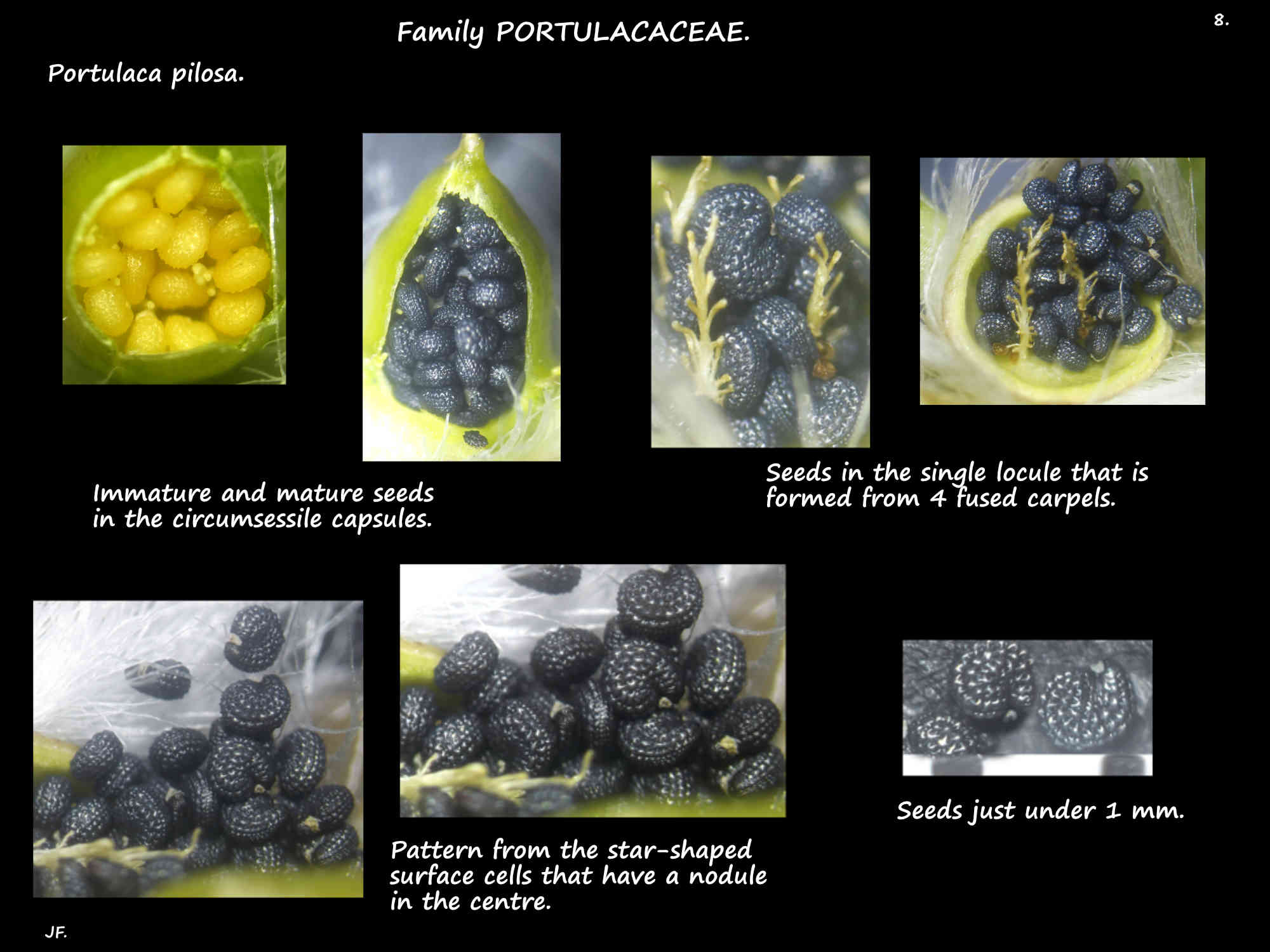Portulaca pilosa.
Hairy portulaca is naturalised in Queensland where it is regarded as a weed.
They are annual or short lived perennial herbs.
From a taproot multiple prostrate stems up to 25 cm long radiate outwards.
The stems branch frequently with some, up to 8 or 10 cm long being erect.
The succulent stems and leaves are green or reddish depending on the amount of sunlight they get.
The alternate leaves have no petioles or ones only 1 or 2 mm long.
The fleshy leaves are up to 2 cm long and a few mms wide.
They are linear to narrowly ovate and in cross section they are slightly flattened.
At the nodes are clumps of white hairs up to 15 mm long some regard as modified stipules.
Plants growing in dry conditions have more hairs than those in wet conditions.
The inflorescences are terminal on the main branch and also on some side branches.
In clusters of 2 to 6 flowers, only one opens at a time so each cluster may have a flower and mature fruit.
Flowers only open in the sun, close as soon as it gets cloudy and do not reopen.
Flowers, with 5 pink or purple petals are around 10 mm across.
There are up to 4 small thin, pointed pinkish bracts at the base the flowers which have no pedicel.
Leaves near the end of a branch are closely spaced forming an involucre around the base of the inflorescence.
With up to 10 leaves the hairs at their bases form a dense mass around the bracts, flowers and fruit capsules.
The calyx has 2 broadly ovate or triangular sepals around 4 mms long.
Their bases overlap but are not joined.
There is no keel or just a slight one down the centre of each sepal.
The tips have a small raised rib or crest that is larger on the inner sepal.
There are 5 pink or red to purple obovate petals around 5 or 6 mm long.
The rounded blade tips have a shallow notch with a short sharp point at the base.
There are 10 to 20 (8 to 30) stamens with thin red filaments and small yellow anthers.
The superior and part inferior ovoid ovary is around 1.5 mm long.
It is derived from 4 fused carpels and has a single locule.
The ovules, in 4 vertical rows have free central placentation.
The red style is around 4 mm long and has 4 (3 to 7) stigmatic lobes.
The fruit are straw-coloured ovoid circumsessile capsules around 4 mm across.
The dried out perianth remains around them as do the white hairs.
When mature the capsules split circumferentially below the middle so the detached dome is
larger than the remaining base.
The numerous kidney-shaped seeds mature from white to pale brown then a shiny black.
They are around 0.6 mm wide and have an intricately patterned surface.
The cells of the outer layer of the seed are derived from the wall of the ovule.
These interlocking star-shaped cells have a nodule in the centre.
They make the repeating patterns on the seed surface.
(The patterns may be different in other species.)
Plants have been recorded to produce nearly 300,000 seeds in a season.
J.F.









